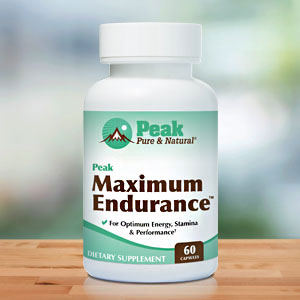Get Easy Health Digest™ in your inbox and don’t miss a thing when you subscribe today. Plus, get the free bonus report, Mother Nature’s Tips, Tricks and Remedies for Cholesterol, Blood Pressure & Blood Sugar as my way of saying welcome to the community!
The best exercise to keep an aging body strong

I’ve noticed an interesting phenomenon at my gym over the past few years – not only am I seeing more seniors exercising, by and large, but the type of exercise they’re choosing is also strength training.
Yup, more and more people over 60 are hitting the weights and skipping the cardio machines.
And, my own dad is one of them.
He goes to the gym with my husband and me at least four days a week. Yet, I can’t get him to join me on the elliptical machines or the treadmill. Instead, he spends all of his time on the weight machines.
He says that since he’s noticed his muscle strength declining with age, it’s the way to go. But, I’ve wondered if he could be doing his health a disservice in the long run.
And now, there’s a study that has the definitive answer on whether strength training or endurance exercise is best to prevent age-related decline…
It all comes down to brain-derived neurotrophic factor
According to a research group at the Biozentrum, University of Basel, the answer to that question all comes down to one thing…
Brain-derived neurotrophic factor (BDNF), a neurotransmitter that acts in your muscle and plays an important role in the formation of strong muscle fibers.
And, the team found that during strength training, this factor is produced by your muscles and actually leads to remodeling of your neuromuscular synapses, the neuronal junctions between your motor neurons and your muscle.
They found that BDNF not only causes your muscle strength to develop, it also leads to endurance muscle fiber number decline. In other words, BDNF converts your endurance muscles into strength muscles.
As professor and head researcher, Christoph Handschin, puts it, “Strength muscle growth occurs at the expense of the endurance fibers. More precisely, through the release of BDNF, the endurance muscles are transformed into strength muscles.”
Strength training and age-related muscular atrophy
This is a big problem if you want to prevent the decline in muscle strength that often comes with aging…
That’s because the team also found that in muscle lacking BDNF the age-related decline in muscle mass and function was reduced. Put simply, although BDNF is there to increase your number of strength fibers, it can actually lead to poor muscle mass rather than improving it.
So, the verdict is with endurance training for the win when it comes to preventing age-related muscular atrophy.
But, what are the best endurance exercises and which should you choose?
Well, that answer is up to you since the one that you’ll stick to is the right choice. However, good options include jogging, biking, dancing, brisk walking, and even swimming. And, it doesn’t matter if you do them at home or hit the gym and use their equipment.
The point is to increase your heart rate and breathing and get your blood pumping.
For safety, remember that if your exercise level leaves you so out of breath that you can’t carry on a conversation, you’re working too hard. Simply back it down until your endurance has built up.
To begin your endurance workouts, start with 10-minute sessions and gradually work your way up to 30 minutes per day. In no time, you’ll be fitter and on your way to preventing muscular decline as you age.
Editor’s note: Did you know that when you take your body from acid to alkaline you can boost your energy, lose weight, soothe digestion, avoid illness and achieve wellness? Click here to discover The Alkaline Secret to Ultimate Vitality and revive your life today!
Sources:
- One or the other: Why strength training might come at the expense of endurance muscles — University of Basel














